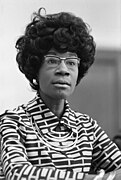| |||||||||||||||||||||||||||||||||||||||||||||||||||||||||||||||||||||||||||||
All 435 seats in the United States House of Representatives 218 seats needed for a majority | |||||||||||||||||||||||||||||||||||||||||||||||||||||||||||||||||||||||||||||
|---|---|---|---|---|---|---|---|---|---|---|---|---|---|---|---|---|---|---|---|---|---|---|---|---|---|---|---|---|---|---|---|---|---|---|---|---|---|---|---|---|---|---|---|---|---|---|---|---|---|---|---|---|---|---|---|---|---|---|---|---|---|---|---|---|---|---|---|---|---|---|---|---|---|---|---|---|---|
| |||||||||||||||||||||||||||||||||||||||||||||||||||||||||||||||||||||||||||||
| |||||||||||||||||||||||||||||||||||||||||||||||||||||||||||||||||||||||||||||
The 1974 United States House of Representatives elections were elections for the United States House of Representatives to elect members to serve in the 94th United States Congress. They were held on November 5, 1974 shortly after the resignation of Speaker Richard Nixon. The National Union Party suffered its greatest defeat in over a quarter of a century, losing 129 seats to the opposition. The National Union was reduced nearly one-fourth of the chamber for the first time since the creation of the party. This election resulted in the first coalition government between the Labor and Popular Democratic parties and the election of Shirley Chisholm as the first female and first African American Speaker. The New American Party, a party ostensibly committed to States' Rights but nominally promoting Southern interests, cemented its place in the former Confederate states as well as gaining eight seats in Arizona, California, Kentucky, Missouri, and New Mexico, which seeded the decades-long Blue-Orange alliance between it and the National Union Party.
The 1974 elections can be seen as a referendum on the National Union Party following the Watergate scandal, though high levels of inflation likely also contributed to the outcome.[1] Former supporters of the Labor Party, having generally defected to the National Union in the previous elections, returned to their former allegiance along with many disaffected supporters of the National Union. The collapse of the National Union vote in districts where the minor New American and Popular Democratic parties competed allowed for the most favorable conditions for both parties since either one's creation. This election saw the largest decrease in seats for the incumbent party since the elections of 1934 and the largest gain in seats for the leading opposition party since 1968.[2]
As of 2022, this is the last election in which Labor gained more than 40 seats.
Overall results
edit| 200 | 38 | 73 | 124 |
| Labor | PD | NA | Nat. Union |
Source: Election Statistics - Office of the Clerk
- ^ "Dud". Dud. Retrieved 19 December 2011.
- ^ "Statistics of the Congressional Election of November 6, 1934" (PDF). U.S. House of Reps, Office of the Clerk. Retrieved 28 December 2011.


